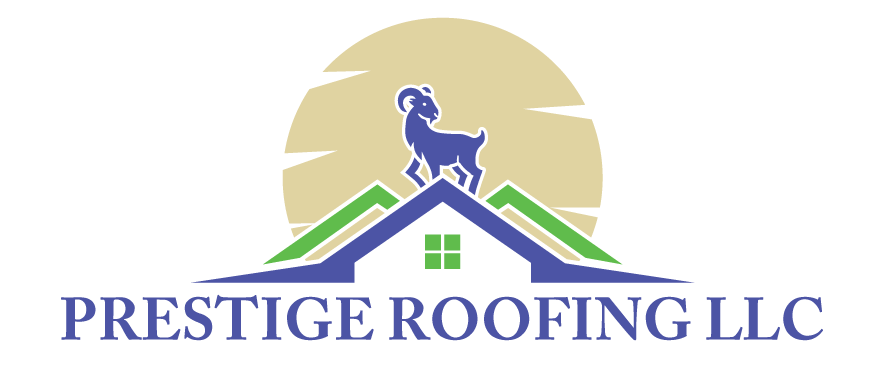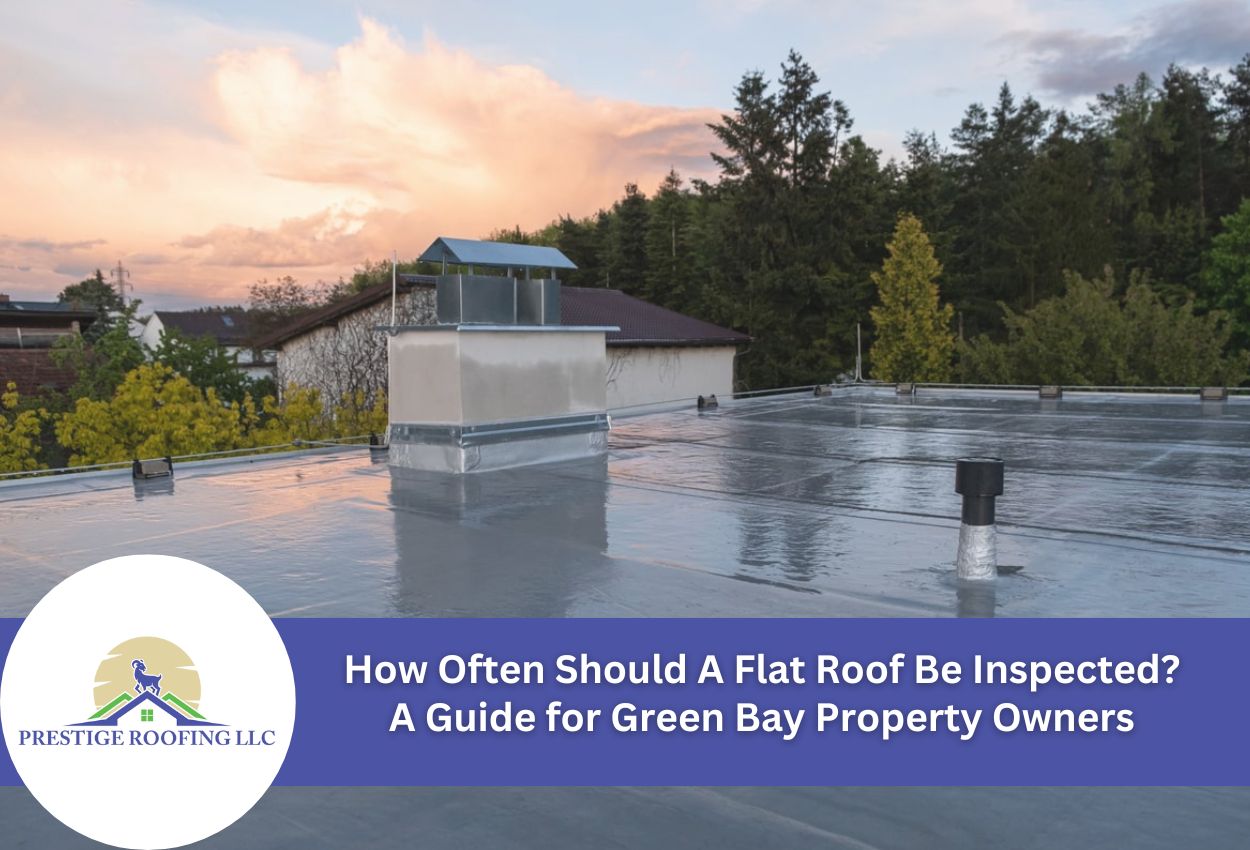In northeastern Wisconsin, where weather conditions range from heavy snowfall to spring rains aTailoring Inspection To The Seasons
Green Bay’s seasonal patterns create specific inspection requirements for flat roof systems. Fall inspections are crucial before winter arrives, ideally scheduled in October or early November to ensure drainage systems are clear of debris and the membrane is intact before snow accumulation begins. This timing allows for necessary repairs before freezing temperatures make work difficult or impossible.
Winter presents unique challenges for flat roofs in Wisconsin. Unlike pitched roofs, where snow naturally slides off, flat roofs must bear the full weight of accumulation. Property owners should visually check for excessive snow buildup (over 12 inches) and signs of sagging, especially after major snowstorms. The freeze-thaw cycles common to Green Bay winters create expansion and contraction that can loosen seams and flashings.
Spring demands another thorough inspection as melting snow and seasonal rains test your roof’s waterproofing capabilities. April is an ideal time to assess winter damage and address issues before summer storms arrive. Summer inspections should focus on UV damage, particularly on older EPDM or TPO membranes that may already be showing signs of deterioration from intense sun exposure.
This strategic approach to seasonal inspections helps Green Bay building owners stay ahead of weather-related issuend summer humidity, flat roofs face challenging forces that could damage them, requiring vigilant monitoring. Understanding how often to inspect your flat roof can significantly extend its lifespan and help prevent emergency repairs that disrupt business operations or damage building interiors.
Most commercial building owners underestimate the importance of consistent roof inspections until they’re faced with water damage or structural issues. Inspections are meant to prevent that from even happening by identifying potential problems before they escalate into costly repairs.
Establishing an appropriate flat roof inspection schedule requires considering both seasonal maintenance needs and the specific characteristics of your building. For Green Bay property owners, understanding the difference between professional inspections versus routine visual checks also makes a difference between a roof that fails prematurely and one that performs reliably for decades. This knowledge forms the foundation of effective roof asset management and protection for your commercial investment.
s that specifically affect flat roofing systems. Following this timeline provides protection during Wisconsin’s harshest weather periods while extending your roof’s functional lifespan.
Warning Signs Your Flat Roof Needs Immediate Inspection
Even with a regular inspection schedule, certain warning signs require you to handle the damage immediately. Interior water stains on ceilings or walls often appear as yellowish or brownish discoloration and indicate that water has entered through your roofing system, and may have been for a long time. Don’t dismiss these signs as minor since they typically represent significant issues that require professional assessment.
Signs on the outside of the building are equally important to recognize. Pooling water that remains on your flat roof for more than 48 hours after precipitation suggests drainage problems that can lead to membrane deterioration and leaks. Watch for membrane bubbling or blistering, which occurs when moisture or air becomes trapped beneath the surface. Cracks, tears, or visible seam separation in the roofing material create direct pathways for water entry and require an urgent professional evaluation.
Between scheduled professional inspections, Wisconsin building owners can perform basic visual checks after severe weather events. From a safe vantage point, scan for obvious membrane damage, check that drains remain clear of debris, and look for displaced ballast material if applicable. Interior checks should include attic or ceiling inspections for moisture, especially after heavy rain or rapid snowmelt.
These regular visual assessments help property owners in northeastern Wisconsin identify problems early, potentially saving thousands in repair costs. Remember that while DIY visual checks are valuable, they don’t replace comprehensive professional inspections that can identify subtle issues before they become evident to the untrained eye.
Commercial vs. Residential Flat Roof Inspection Schedules
The inspection requirements for flat roofs vary significantly between commercial and residential properties in Green Bay. Commercial buildings typically require more frequent inspections due to their roofs being larger, hosting complex mechanical systems, and higher stakes in terms of business continuity. Most commercial properties should undergo professional inspections at least twice a year, with additional checks following severe weather events specific to northeastern Wisconsin.
Residential flat roofs, while less common in our area, generally follow a different schedule. Homeowners with flat roofs should arrange for professional inspections annually, typically in spring after winter’s harsh conditions have blown over. However, the specific function of the building dramatically impacts the amount it requires an inspection. Restaurants, manufacturing facilities, and buildings with roof-mounted HVAC equipment need quarterly inspections due to increased foot traffic and equipment vibration that can accelerate wear.
Local building codes in Green Bay and surrounding communities often mandate specific inspection protocols for commercial properties, particularly those serving the public. Retail spaces, schools, and healthcare facilities face stricter requirements than private residences or storage buildings. Property owners should note that insurance policies increasingly require proof of regular roof inspections, with commercial policies typically setting stricter standards than residential coverage.
Understanding these differences helps property owners develop appropriate maintenance schedules that balance protection with practicality. The investment in proper inspection frequency ultimately delivers significant returns through extended roof lifespan and preventable interior damage, regardless of property type.
What Experts Look For During Their Inspections
When our professional roofing teams conduct flat roof inspections in Green Bay, we follow a comprehensive checklist developed through years of experience with Wisconsin’s unique weather patterns. Drainage systems receive particular attention as they’re often the first point of failure on flat roofs, so experts examine drains, scuppers, and downspouts for blockages while assessing whether the roof maintains a proper slope for water runoff. The roofing membrane is also thoroughly evaluated for tears, punctures, blistering, and seam integrity, with special focus on areas where standing water occurs.
Flashing details around rooftop penetrations, HVAC units, and edges are meticulously inspected as these transition points are highly vulnerable to leaks. Professional roofers also examine the roof substrate for signs of structural weakness, paying close attention to any sagging or deflection that might indicate deck deterioration beneath the membrane. In Wisconsin’s freeze-thaw environment, expansion joints are carefully assessed to ensure they can still accommodate building movement.
Beyond visual inspection, today’s professional roof evaluations often employ advanced technology to detect issues invisible to the naked eye. Infrared thermography allows inspectors to identify trapped moisture beneath the membrane, which has proven to be especially valuable after winter when ice dams may have forced water under the roofing system. Electronic leak detection and moisture scanning also have the ability to pinpoint leaks before visible damage occurs. These forms of technology provide Wisconsin building owners with early warnings of developing problems, allowing for targeted repairs that extend roof lifespan and prevent expensive interior damage.
How To Monitor Between Professional Inspections
While professional inspections form the cornerstone of your flat roof maintenance strategy, implementing a DIY monitoring program between these expert visits is equally important for Green Bay property owners. With Wisconsin’s rapidly changing weather conditions, regular self-checks can help identify potential issues before they turn into major problems. Start by conducting monthly visual inspections from a safe vantage point using binoculars, looking for obvious membrane damage, ponding water, or debris accumulation around drains.
During winter months, monitoring snow accumulation becomes critical. Flat roofs in Green Bay typically should not support more than 20 pounds per square foot of weight from the snow. Using a roof rake with a plastic edge (to avoid membrane damage) can help manage excessive buildup after heavy snowfall. After strong winds, check for displaced ballast material and loose flashing that might compromise your roof.
Create a seasonal maintenance calendar tailored to northeastern Wisconsin’s weather patterns. Spring tasks should include checking for ice damage and clearing winter debris from drainage systems. Summer monitoring should focus on UV exposure effects and potential expansion damage during heat waves. Fall maintenance must emphasize clearing leaves and needles from drains before winter arrives. This systematic approach to DIY monitoring complements professional inspections and helps Green Bay property owners maximize their flat roof’s lifespan through early problem detection.
Creating a Customized Inspection Schedule for Your Flat Roof
In order to create a custom inspection schedule for your roof, you can start by assessing your roof’s age. Newer installations (0 to 5 years) may need only annual professional inspections, while middle-aged roofs (5 to 15 years) benefit from semi-annual checks. Roofs approaching the end of their expected lifespan require quarterly professional evaluations to catch deterioration early.
Your roofing material significantly impacts how many times a year you’ll need to inspect it as well. EPDM membranes typically need inspection every 6 months, while TPO and PVC systems may perform reliably with annual checks during their first decade. Modified bitumen roofs, particularly common on older Green Bay buildings, benefit from quarterly inspections due to their vulnerability to Wisconsin’s freeze-thaw cycles.
Environmental factors around your building also determine inspection needs. Properties near manufacturing facilities face increased exposure to chemical deposits and may require more frequent inspections. Buildings surrounded by tall trees need additional inspections during fall to prevent drainage blockages. Consider your building’s use as well, since restaurants with rooftop exhaust systems need more frequent inspections than storage facilities due to grease accumulation affecting the roofing membrane’s durability.
For maximum roof protection, partner with local roofing professionals who understand Wisconsin’s unique challenges. The best contractors will help establish a preventative maintenance program combining scheduled professional inspections with owner monitoring protocols. This partnership not only extends your roof’s lifespan but also documents care for warranty and insurance purposes, protecting your Green Bay property for years to come.
Ensure Your Flat Roof’s Longevity with Prestige Roofing LLC
Understanding the frequency of flat roof inspections is crucial for maintaining the structural integrity and functionality of your property in Green Bay. The unique weather patterns of Wisconsin, especially the harsh winters and rainy springs, require a proactive approach to roof maintenance.
To avoid the high costs associated with emergency repairs and extend the lifespan of your roof, it is essential to adhere to a recommended inspection schedule. Prestige Roofing LLC specializes in thorough inspections and maintenance that align with Wisconsin’s seasonal needs. Our experienced professionals are equipped with the tools and knowledge to spot potential issues before they become major problems.
Don’t compromise on the safety and efficiency of your flat roof. Call us today at (920) 791-0414 to schedule your professional inspection and tailor a maintenance plan that suits your specific needs. Trust Prestige Roofing LLC to protect your investment and keep your roof in top condition.

